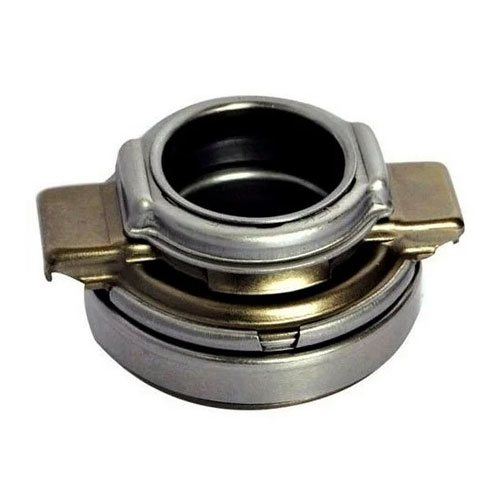
Clutch release bearing is a relatively important part of the car. If the maintenance is not good, it will not only cause economic loss, but also it is quite troublesome to disassemble once, which requires a lot of man-hours. Therefore, it is important to understand the cause of the failure of the clutch release bearing and to properly maintain and maintain it during use, which is prolonged the life of the separation bearing, improves labor productivity, and achieves better economic benefits. For related standards, refer to "JB/T5312-2001 Automobile Clutch Release Bearing and Its Unit".
effect
The clutch release bearing is mounted between the clutch and the transmission, and the split bearing seat is loosely sleeved on the tubular extension of the first shaft bearing cover of the transmission, and the shoulder of the release bearing is always pressed against the separation fork by the return spring, and is retracted to the final position. Keep a gap of about 3~4mm from the end of the separation lever (separation finger).
Since the clutch pressure plate and the separating lever are synchronously operated with the engine crankshaft, and the separating fork can only move axially along the clutch output shaft, it is obviously impossible to directly disengage the separating lever with the separating fork. By separating the bearing, the separating lever can be rotated while rotating. The clutch output shaft moves axially, ensuring smooth engagement of the clutch, soft separation, reduced wear and longer clutch life and overall drive train life.
working principle
When the clutch release bearing is in operation, the force of the clutch pedal is transmitted to the clutch release bearing. The clutch bearing moves toward the center of the clutch platen such that the platen is pushed away from the clutch plate to separate the clutch plate from the flywheel. When the clutch pedal is released, the spring pressure in the pressure plate pushes the pressure plate forward and presses against the clutch plate to separate the clutch plate and the clutch bearing to complete a working cycle.
performance
Clutch release bearing movement should be flexible, no sharp sound or stuck, the axial clearance should not exceed 0.60mm, the inner race wear should not exceed 0.30mm.
cause of issue
(1) Excessive operating temperature causes overheating. Many drivers often turn the clutch halfway when turning or decelerating, and some of the rear legs are placed on the clutch pedal; some vehicles have too large free travel adjustment, so that the clutch is not completely separated, in a semi-engaged and semi-separated state. The state causes sliding friction between the friction disc and the flywheel, which generates a large amount of heat transfer to the separation bearing. The bearing is heated to a certain temperature, the grease melts or dilutes the flow, and the temperature of the separation bearing is further increased. When the temperature reaches a certain level, it burns. Bad separation bearing.
(2) Wear is lacking in grease. The clutch release bearing is lubricated with grease. In actual work, the repairman easily overlooks the lubrication problem of the separation bearing. The separation bearing is not filled with grease during installation, resulting in lack of oil in the clutch release bearing. The wear of non-lubricated or less lubricated split bearings tends to be several to several times as large as lubricated split bearings. As the wear increases, the temperature will also increase greatly, which will damage the separation bearing more easily. Therefore, during the repair process, when installing the clutch, check the lubrication of the separation bearing and timely add grease maintenance.
(3) The free travel is too small or the number of loads is too high. According to the requirements, the gap between the general clutch release bearing and the separating lever is 2.5mm. The free stroke reflected on the clutch pedal is 30~40mm. The free travel is too small or there is no free travel at all, which will separate the separation lever. The bearings are in a normally engaged state. According to the principle of fatigue failure, the longer the bearing working time, the more serious the damage; the more the number of loads, the more likely the separation bearing is to cause fatigue damage. Moreover, the longer the working time, the higher the temperature of the bearing, the easier it is to burn and the longer the service life of the separation bearing.
(4) Whether the separation lever is adjusted flat, whether the separation fork is deformed, whether the separation bearing return spring is good, and also has a great influence on the damage of the separation bearing. Separation adjustment unevenness, separation fork deformation, separation bearing spring does not return to position, will cause the separation bearing to resist the separation bearing, so that the separation bearing is always in working state, the temperature is getting higher and higher, easy to burn off the bearing, reduce the separation bearing The service life.
(5) Lightly step on and easily, allowing it to smoothly engage and separate.

